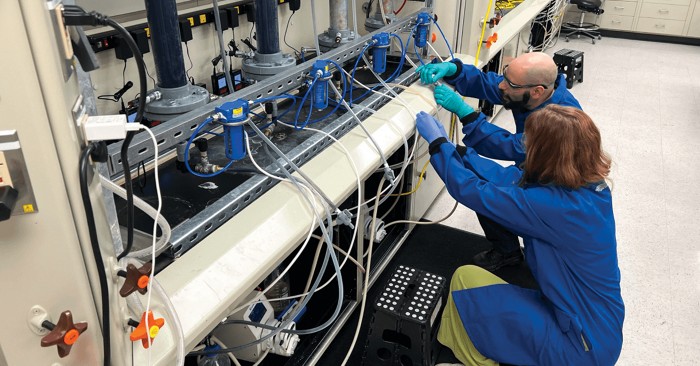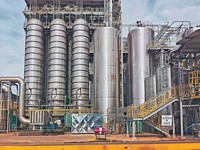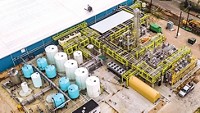Advertisement
Grab your lab coat. Let's get started
Welcome!
Welcome!
Create an account below to get 6 C&EN articles per month, receive newsletters and more - all free.
It seems this is your first time logging in online. Please enter the following information to continue.
As an ACS member you automatically get access to this site. All we need is few more details to create your reading experience.
Not you? Sign in with a different account.
Not you? Sign in with a different account.
ERROR 1
ERROR 1
ERROR 2
ERROR 2
ERROR 2
ERROR 2
ERROR 2
Password and Confirm password must match.
If you have an ACS member number, please enter it here so we can link this account to your membership. (optional)
ERROR 2
ACS values your privacy. By submitting your information, you are gaining access to C&EN and subscribing to our weekly newsletter. We use the information you provide to make your reading experience better, and we will never sell your data to third party members.
Agriculture
Clean fertilizer technology attracts investment
But the industry’s massive scale makes it hard for new production methods to advance beyond niche applications
by Matt Blois
April 25, 2024
| A version of this story appeared in
Volume 102, Issue 13

Several start-ups developing technologies to produce nitrogen fertilizer with low carbon emissions have attracted investment in recent weeks. But some analysts say the massive scale of the fertilizer industry means these companies will likely play only a niche role on the farm.
Windfall Bio raised $28 million to increase production of a bacteria that ferments methane emissions from dairies and oil wells into nitrogen-rich fertilizer. Jupiter Ionics received $6 million in private investments and a $1.6 million grant from Australia’s government to continue developing an electrolyzer that converts air and water into the fertilizer ammonia.
Meanwhile, the start-up Ammobia raised $4.2 million to scale up a technology that produces ammonia at lower pressures and temperatures than conventional processes. And last month, Tsubame BHB raised $35 million for a better catalyst for ammonia synthesis.
Ammonia is typically produced by catalytically combining hydrogen derived from fossil fuel with nitrogen from the air in a reactor under high temperature and pressure. The process has an enormous carbon footprint—from both the carbon dioxide released during hydrogen production and the energy consumed to combine hydrogen with nitrogen.
A number of large ammonia producers, including CF Industries and Yara, hope to cut emissions by using electrolyzers to make hydrogen from water and relying on renewable energy to combine it with nitrogen—essentially a cleaner version of the conventional Haber-Bosch process. In another approach, companies like Tsubame, Copernic Catalysts, and Nium are developing more efficient catalysts that allow the Haber-Bosch process to run at lower temperatures.
Ammobia cofounder Karen Baert calls her company’s technology Haber-Bosch 2.0. Conventional plants convert only 20% of the input gases into ammonia, she says. Those facilities separate the ammonia, repressurize the remaining gases, and recycle them back into the production process. Baert claims that Ammobia has significantly increased the amount of gas that is converted into ammonia, eliminating the need for a gas recycling step.
“That’s a huge recycling loop that requires a lot of energy,“ she says. “Our new separation methods circumvent that.”
Other firms are pursuing an entirely new route to ammonia. Instead of making hydrogen via electrolysis, Jupiter Ionics avoids this step and electrolytically makes ammonia from water and nitrogen. The company says it will use its funding to reduce production costs and scale up its electrolyzer.
Runeel Daliah, a chemical industry analyst with the intelligence firm Lux Research, says skipping over hydrogen production makes the process much more efficient. But he warns that this technology struggles to produce ammonia quickly enough to be economically competitive.
It’s also possible to produce nitrogen fertilizers with bacteria. Windfall CEO Josh Silverman says his firm uses artificial selection to improve a naturally occurring bacteria’s ability to consume methane, a greenhouse gas produced in a cow’s gut.
Windfall sells its bacteria to dairies, which pump methane from barns into a bacteria-seeded compost pile. The bacteria feast on the gas and multiply. The nitrogen from amino acids, proteins, and sugars inside their cells can improve soil fertility when farmers spread the compost on a field.
“The one thing that bacteria are really good at making is more bacteria,” Silverman says. “Trying to engineer them to make chemicals is hard . . . the goal here is to give them the right environment, give them the food, and they know how to do the rest.”
Daliah appreciates the ingenuity of the new technologies but says they will struggle to make ammonia as inexpensively as the synthetic fertilizer industry, which benefits from huge factories that have been optimized over decades.
After wars, the COVID-19 pandemic, and clogged ports slowed global trade at the beginning of this decade, companies like Tsubame and Jupiter Ionics say, farmers might be interested in installing a small ammonia synthesis plant on their own land to guarantee access to fertilizer.
Daliah argues that such systems will be hard to sell and a small niche. Many of these companies also tout the low carbon footprint of their process, but Daliah says farmers don’t have an incentive to pay more for sustainable fertilizer.
“It all comes down to economics,” he says. “As long as these green fertilizers are more expensive than synthetic fertilizer, there will be no uptake in the market.”





Join the conversation
Contact the reporter
Submit a Letter to the Editor for publication
Engage with us on Twitter